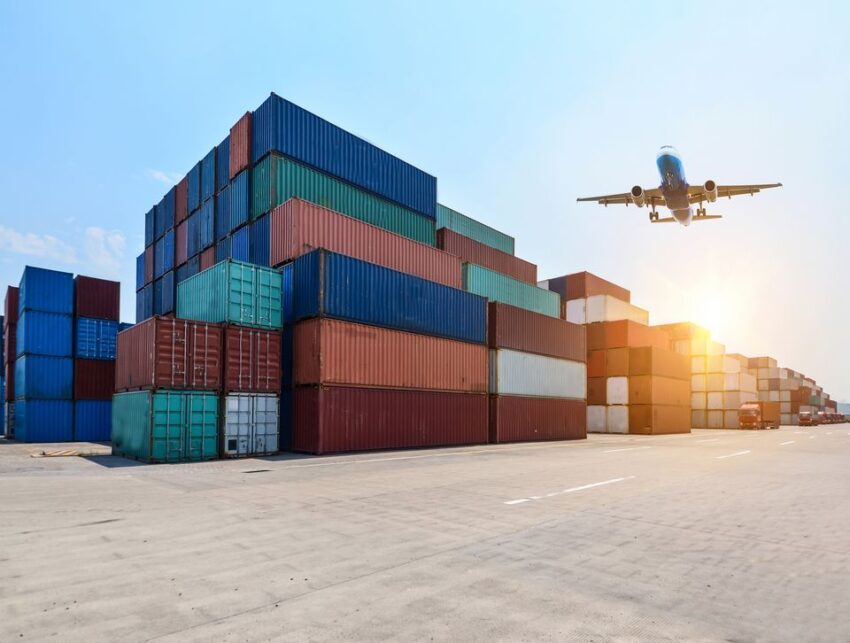The pandemic along with the surge in e-commerce sales have provided the much-needed boost to the air freight industry that has become the most sought-after mode of fast cargo transportation. The need to ship cargo quickly is primarily driven by customer expectations and the need to send items to their destinations ASAP. Nevertheless, for a sector the core value of which is speed, the air freight industry considerably lags when it comes to visibility, agility, and ease of operations for the air freight forwarders. In today’s post, we are going to discuss how the digitization of the air freight shipping industry will benefit the global supply chain and lead to increased revenues.

Why the air freight industry needs to digitize its operations
In the words of Willie Walsh, the Director-General of IATA, “Air cargo demand is not just recovering from the Covid-19 crisis, it is growing. With demand at 9% above pre-crisis levels, one of the main challenges for air cargo is finding sufficient capacity. This makes cargo yields a bright spot in an otherwise bleak industry situation.”
In this scenario, now more than ever, the air cargo industry needs to make the most of the technological advancements. The TIACA (The International Air Cargo Association) has enumerated five key priorities that the air freight sector should focus on for modernizing its operations and for coping with the demands of the customers. These priorities are- Digitization, Sustainability, Collaboration, Security Enhancement, and Liberalization.
The pandemic has made it apparent that the use of data for modernizing processes and for offering transparent services is now imperative. In other words, it is vital for the air cargo industry to start implementing plans for digital transformation. The pandemic has exposed the inherent weaknesses of this sector. The only solution to this is automation and digitization. Digitization of the air cargo industry could potentially improve aspects like operations, flexibility, planning, and sustainability.
How The Coop’s FreightViewer will help to digitize the operations of air freight forwarders
Back in 2018, The Cooperative Logistics Network created a member-exclusive TMS- FreightViewer to enable the agents to leverage digital trends for facilitating seamless communication among all the stakeholders of a shipping project. FreightViewer entails the use of a completely transparent cloud-based system that allows for easy comparison of several shipping rates to provide the best deal to the customers.
The main advantage for The Coop members – against other TMS like Icontainers, Freightos, Flexport or Cargowise – is that it allows them to be at the cutting edge of technology and compete with the stalwarts in the industry by digitizing the majority of business processes. With FreightViewer, the Coop members can fully digitize their quote generation process. It allows them to create and send an instant accurate door-to-door quotation within less than a minute. It allows them to calculate instant accurate door-to-door quotations within less than a minute and even sell their rates to members and customers online.
Nevertheless, as one of the foremost freight forwarding networks of our times, The Cooperative is constantly working on improving the efficiency of this TMS. The Cooperative Logistics Network is presently dealing with various partners in the logistics sector and ecommerce experts in order to improve the platform and add new fuctionalities and services. Step by step, FreightViewer will be the tool that will revolutionize the mode of operations of the agents in the network.
Challenges faced by the air freight forwarders
Manual and paper-based processes
Even to this day, a vast majority of air freight bookings are made over phone calls and emails. The air freight forwarders at times need to wait for 2-3 days before getting a quotation. Moreover, the booking process is also a lengthy one that could take several hours. Even after a long wait time, the shippers hardly ever get guaranteed space on a specific flight. In a time when paper tickets have become obsolete, half of air freight operations still rely on paperwork. Additionally, these manual processes of the air carriers trickle down to the freight forwarders that in turn amplifies the chances of delays and errors.
Additionally, the lack of standardization and data integration also lowers end-to-end visibility during the journey of the cargo. This in turn also results in inadequate customer care and inefficiencies in the supply chain.
Inadequate capacity utilization
Yet another problem that this industry should address is inefficient capacity utilization. The problems with optimizing shipment capacity utilization primarily originate from disproportionate cargo flow, structural overcapacity, and restricted cargo predictability. The use of IoT and Advanced Analytics can help to accelerate the cargo handling process, and offer greater insights by providing better forecasts.
Increasing competition
Airplanes results in more carbon emissions than other modes of transport. As a result, the environment-conscious customers seek to avoid products that come with a greater carbon footprint. Therefore, the air cargo industry is having to deal with fierce competition from other transportation modes that are more environmentally friendly. Moreover, e-commerce giants like Walmart, Amazon, and Alibaba are starting their own freight operations that could potentially disrupt the traditional players in this sector.
Digitization of freight operations can also help to address the issue of sustainability. For example, the digitization of several processes at Atlanta Airport in Georgia, USA, helped to prevent the emission of 9 tonnes of CO2 since the start of 2021. Additionally, it allowed the airport authorities to save over 5,650 liters of fuel.
How digitization can help to revitalize the air cargo shipping industry
Digitization could bring out a massive change in the entire ecosystem of the air freight sector. For instance, it can help to align carriers, shippers, and air freight forwarders thus enabling real-time matching of demand and capacity. Simply put, with the help of technology, the entire shipping process from quote generation to delivery could be completed within 2-3 days. Moreover, it would help to reduce costs, enhance load factors, boost revenue and improve customer service. Simply stated, providing better services at affordable rates will expand the revenues of all the stakeholders. The implementation of the technology would result in unified pricing across the world. Additionally, it will lead to dynamic pricing that would substitute seasonal prices and allow carriers to adjust their prices based on market conditions.


